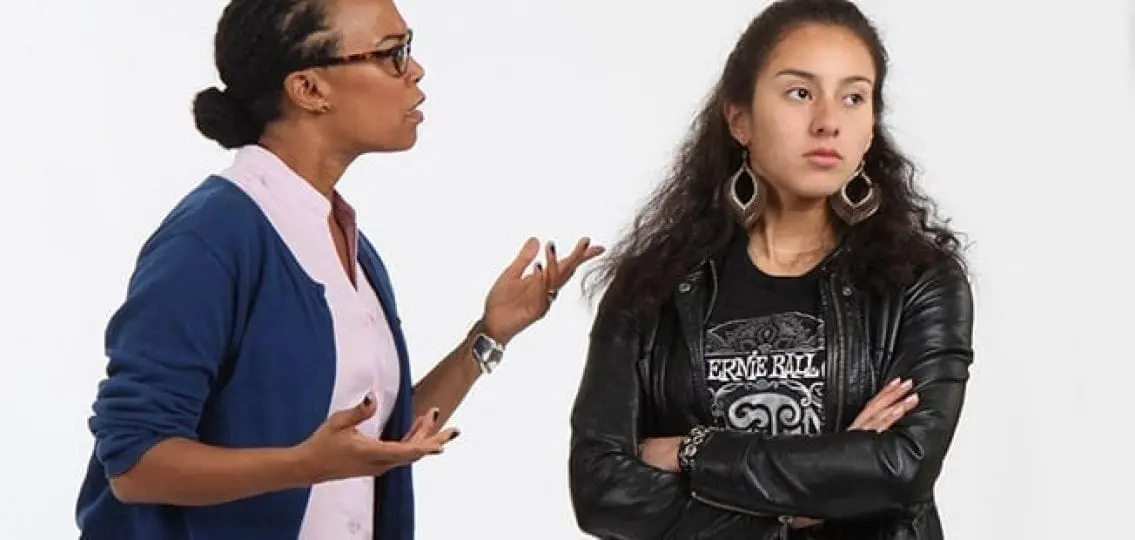Teens’ Bad Clothing Choices: Does it Drive You Nuts?
Dina Simpson used to get upset with her daughter when she wanted to wear leggings to school. “They were so revealing, like she’d put on a pair of stockings and forgot the rest of the outfit,” the Ohio-based mom recalls.
But as offensive as the leggings seemed, they were not half as bad as the outfits Simpson herself used to don as a teenager in the 80s. “I wore a ton of ripped, baggy jeans and cut-up t-shirts—think Madonna’s ‘Lucky Star’ period,” Simpson says. She recalls a particular exhibitionist phase when she thought it was fun to wear men’s boxer shorts to school.
Fashion, she eventually reasoned, changes as quickly as the seasons. But the one thing that remains constant through the years is parents’ disapproval of their teenage daughters’ choices.
Teenage Fashion Through the Ages
Indeed, the history of the American teenage-parent clothing wars dates back to at least the turn of the century, says Beth Dincuff Charleston, a professor of fashion history at Parsons The New School for Design in New York. Mothers in the 1890s, for instance, wore stiff corsets and close-fitting dresses in order to fit the Gibson-girl, wasp-waisted feminine ideal of the time. So they were horrified when their daughters started wearing blouses and ditching the stiff undergarments.
“Girls were going for more of a practical than feminine look,” Charleston explains. Parents and grandparents were similarly outraged when teen girls began chopping off their hair—long a symbol of femininity and beauty—into short bobs and wearing flapper dresses with calf-length stockings in the 1920s. “At the time, it was a brazen act to show your knees,” Charleston says. “It was definitely something their mothers wouldn’t do.”
It was the same story in the 1950s. Some teenage girls started wearing jeans and overalls—a style borrowed from their brothers and male classmates. “They liked them for the same reason we like boyfriend jeans today— they were comfortable. It can be nice not to have to wear tight clothing all the time,” Charleston says. Mothers, however, accused their teenagers of looking sloppy—and forbade them from wearing pants outside the house.
In the 1960s, with the advent of the bikini and the mini-skirt, parents were less worried about their daughters’ sloppiness and more worried about their sexiness. “Parents would not let their daughters out of the house because they feared their clothes—or lack thereof—would turn boys on,” Charleston says. For the first—but not the last time— girls were cautioned and ordered to dress in more conservative layers, so as “not to attract the wrong type of attention,” Charleston says.
The restrictions didn’t work. The 70s brought about hot pants, halter tops, and mini dresses—pieces that now even mothers—like Carol Brady— were wearing unapologetically. Modesty proponents didn’t think things could get any more risqué. That is, until girls began wearing underwear (slips, bras) as outerwear in the 1980s, largely as a result of Madonna’s influence. “The argument then was: Is this just fun? Or are some girls too young to realize how sexy they are being?” Charleston says. And this argument continues today, at the kitchen table, in the car, and in dressing rooms. Now teenage girls gravitate toward dresses with revealing cut outs and high slits—inspired by music videos and red-carpet styles.
Tips for Talking About Inappropriate Teenage Clothing
Though ostensibly these fights may seem to be about the proper width of a spaghetti strap, often what these arguments are really about are control. “We need to remember that it’s developmentally normal for teens to seek out friction with their parents—and clothing choices are a pretty tame way to do that,” says psychologist Lisa Damour, author of Untangled: Guiding Teenage Girls Through the Seven Transitions Into Adulthood. Here’s what she recommends parents try.
1. Offer (Calm) Feedback
If you are really unhappy about your teen’s navel-baring shirt, for instance, Damour suggests you’ll have the greatest effect approaching the discussion from a dispassionate position. “Teenagers don’t always understand how things are coming off,” she says. “A nice first step is to give them kind of collegial feedback. You can say, ‘You should be prepared that that shirt might bring extra attention your way. I just don’t want you to be surprised by that.’”
2. Find Your Family’s Middle Ground
Where the conversation goes from there depends a lot on your individual family’s norms. Some parents can get away with saying, “You’re not allowed to wear that,” and others might give more leeway. “As with most ways of parenting, there are a lot of ways to get this right,” says Damour. “The way to get it wrong is to just lay down the law without trying to understand each other’s positions or to say nothing at all when it is clear that your teenager is wearing something grossly inappropriate.”
3. Try a Mutual Veto
One way to stave off these morning fights is to adopt a “mutual veto” rule while shopping together in the first place. “It’s a great lesson I’ve learned along the way,” Damour says. In a mutual-veto scenario, both you and your teenager are allowed to veto clothing selections. You keep shopping until you find an item that hasn’t been vetoed.
The good news is that bad clothing choices—unlike say, bad drinking and driving choices—are not likely to harm your teenager. Despite Simpson’s outrageous teenage style, “I somehow grew into an adult woman who knows what’s appropriate to wear when,” she says. “I have faith my daughter will too … hopefully,” she laughs, though she still really, really hates those leggings.




